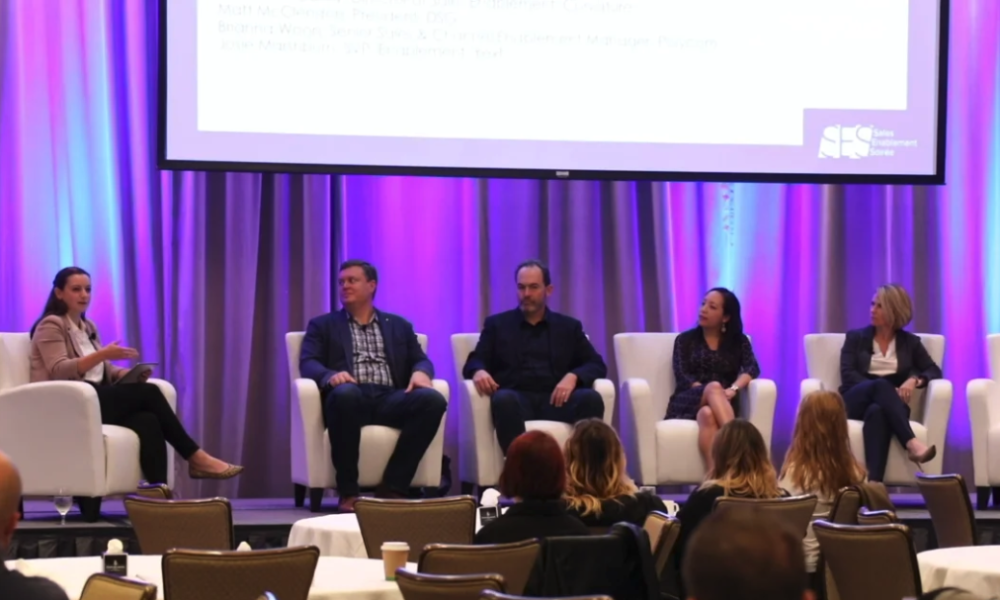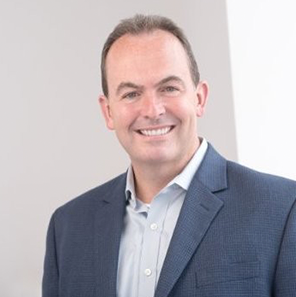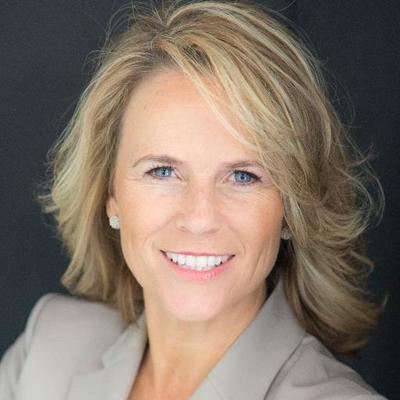Episode 124: Best of PRO 2020 – Training Edition
5.5K Views | 21 Min Read
Shawnna Sumaoang: Hi, welcome to the Sales Enablement PRO podcast. I am Shawnna Sumaoang. Sales enablement is a constantly evolving space and we’re here to help professionals stay up to date on the latest trends and best practices so that they can be more effective in their jobs. As we get ready to close out the year, we want to spend some time reflecting on the top expertise that was shared with us this year. We’re kicking off a series of podcasts on lessons learned across key areas of sales enablement. This week, we’re diving into the best expertise on training from 2020. To start, we’re going to hear from some of our experts on best practices for onboarding and training frameworks.
Mike Rioux: We give you your first six months to ramp to productivity. So, no quota your first six months. All we want you focusing on is getting up to speed on what we sell and how we sell it. So, the first starts day one, you figure out where the washrooms are, and we get you your pre-work. So, pre-work for our sales bootcamp and this includes, technical foundations, database fundamentals, sales fundamentals, sales process introduction. And you do some pre-work you meet with a solutions architect buddy. So, a solutions architect is basically a technical seller, a salesperson’s counterpart. So, we pair you up with them, you meet with them and you dive really deep into the technology. They help you close any gaps that you have with the pre-work. You do a final exam. You jump into bootcamp. So, bootcamp is a live intense weeklong sales training. So, you’ll get a really good understanding for the value that we provide as a company and how we can go sell this product and our products and our services to our customers. Then once you graduate boot camp, which happens in and around the one month, you basically get out into the field, you start having some conversations with your customers, some nice conversations, some not so nice conversations, and you gain a lot of contexts.
You do a lot of contextual learning. But we don’t just kind of throw you out there. We have a pretty prescriptive post-bootcamp, self-paced learning track. We’ll call it where we sprinkle in different bits of information and knowledge that you need at the right time. And after you get all that great contextual learning, we’re going to bring you back for another in-person or live training called advanced sales training, where we dive deeper into the technology, deeper into the modern data architectures, deeper into our sales process. And then after advanced sales training, you are ramped.
Marie-Louise Dalsgaard: Another way that we set them up for success is to set really high expectations. The days of our bootcamp are not easy. It ends with a really strong power hour where they have to call their first clients after four days, and that’s a really high expectation that we have of them, and they all succeed, and they all do really well. But making sure that we’re not sort of the soft spot, and then they come out on the other side and they get a completely different experience. We are a fast-paced company, so things need to move fast, and we show that during the onboarding.
Then I think it’s about not seeing onboarding as a one week kind of thing, and then sales enablement can brush their hands and say, “bye, have fun.” We have these four core areas that we are focusing on and they kind of are a continuous cycle of things that happen for the people who join Pleo. So yes, we host a bootcamp initially to immerse them into our company, and then we focus on ramping them over a course of three to four months where they really get weekly new learnings that they need to take in to master their experience. Then there becomes a time where we focus on mastery, and that’s really where we try and train them to become the next promotion level that they get. So really making sure that we’re not just sort of setting them up for success in the first couple of weeks, and then they’re forgetting about us, but we’re constantly with them throughout their whole career in Pleo.
SS: It is important for onboarding and training to come with a really solid foundational knowledge around what it takes for adults to learn. And so, we’ve got some great tips on adult learning from some of our experts from this year.
April Terry: With children, children are empty shelves, they are sponges, they are empty bookshelves just waiting to be filled. And for the most part, they look to a teacher or a parent and they immediately trust what’s coming out of their mouth. They don’t have as much to contradict, right? They’re empty bookshelves, they’re just open vessels waiting to learn everything about the world. In contrast, adults are filled bookshelves. When you present information to an adult, they’re kind of choosing what to take in because they have so many books and information on their shelves already. And the approaches that you have to take with an adult versus with a child is it’s very important that you understand maybe some pre-knowledge, or you understand where an adult is coming from, what existing knowledge do they have and how is the new information that I’m going to share, maybe connect with that existing knowledge? Again, we’ve got a lot of books on our bookshelves, so if we’re able to tie this new piece of information is going to fit perfectly on that bookshelf, we’re able to get people to retain and be open for that information
Julie Dirksen: So, I look at if it is a knowledge gap, what’s going to help people. Sometimes that is the gap between where somebody is and where they need to be. If you have a very experienced salesperson who totally knows their product line and all you’ve got are a few updates to that product line, then knowledge is all they need. They just need to know what those updates are. They’ll be able to take that knowledge and go and use it. But if you’ve got an inexperienced salesperson who doesn’t know much about the product line at all, just handing them those facts probably isn’t going to be enough to help them adequately apply those in the workplace. Sometimes it’s a knowledge gap, but sometimes it’s more than a knowledge gap and a lot of training unfortunately gets treated as we just need to tell people the thing and then they’ll do something differently.
I also look at things like procedural gaps, where we have a really defined rule set. So, the procedure for filling out a sales report or the procedures for doing an order or something like that might be really specific. And we have a nice set of rules and we know exactly what correct performance looks like. But then there are also skills gaps. Skills have one really simple thing. Is it reasonable to think that somebody can be proficient without practice? For example, could you call somebody up and explain it to him over the phone? Well, procedural stuff, maybe you could just talk them through the steps, right? But with skills, you’re never going to call somebody up and explain golf to them over the phone, and then expect them to be able to go out and play golf. So, anything where we really know that practice is going to be important in order for somebody to get good at something, that’s what I consider to be a skills gap and skills are particularly important because then the answer is sort of built right into the question of what do we need to do for these people? Well, we need to give them opportunities for practice and figure out how they’re going to get feedback on their performance.
SS: Once a solid framework is established. It’s important to move on to flawless execution of tactical details. In these quotes, we’re going to hear about some of the tactical elements of successfully pulling off training.
Murt Hussain: I think there are two main principles that I personally really strive and implement when it comes to our onboarding and training. Number one is teaching the important topics in five different ways. So, I understand people learn in different ways. My background is in art, so I’m a very visual learner, but there are people who might learn better in a classroom setting. They might learn through an LMS course. They might learn through a mentor, right? So I have ways to implement the “have-to-know” topics in five different ways. This can be through an LMS course, through a classroom-style discussion. I create podcast episodes internally, so maybe a podcast episode while they’re going for a run or working out. We do it through games, we do it through guest presenters, through BDR mentors, through guest speakers. With these topics, I’ve really gotten a lot of love through five different ways and hope it’s helping these new reps understand and hone in on the topics in different channels.
Evangeline Earl: I think another thing that sales enablement practitioners can keep in mind is the timing of the different training sessions that you’re teaching. So, for example, are you teaching internal processes right at 8:00 a.m.? Or are you teaching really technical product training sessions right after lunch? Because that’s definitely something that we are very conscious of at Granite is really just looking into the timing of those different training sessions that we’re teaching and figuring out when best to capture the sales rep’s attention.
SS: It’s absolutely critical as you’re designing onboarding and training initiatives that you’re doing so with the learner in mind. And so instructional design and a solid understanding of how best practices apply there are also critical.
Alyssa Clark: I really see learning as a human-based brain pattern thinking approach that we need to lean into fully and understand. And I think at its core where we need to arrive at as a discipline is really making sure when we’re designing a piece of content as a learning professional, is that the right solution, right? Is content king? I would probably argue that not anymore. I think content is context. And again, by using design thinking, what we’re able to do is shift the approach from quantity and high consumption of collateral to truly what is the right solution to support the performance outcome. So, absolutely sometimes the answer is content and through design thinking, we’re able to arrive at that and truly have a higher lift content experience for the learner
Matt Sustaita: The biggest thing to really consider is getting into that analysis or that discovery phase and doing a really good job. I think the challenge that I see a lot of companies, and even in my own organization, it could be a challenge where you see a potential problem or you think there’s a solution that’s going to solve for and you just go, and you start building. But in reality, just like any good salesperson you want to make sure you do a really good discovery to really identify what it is that businesses are struggling with, where do they really need help?
On my team, something that I really pushed back on is, if you get a request for a problem like negotiation or discovery questions, or what have you, any different aspects of training that salespeople might need, I really like to slow down the person asking for, and really identify where are the real problems? What are they doing today? What do we actually want them to do, what barriers are in the way and stopping them from actually being able to perform an act the way that we want, and then what do we want them to do at the very end of this training? What behaviors do we want to see changed? Because putting people in front of content is great and all, but what are you really measuring? Where’s that really going at the end of the day? So that’s something that I really slow my team down on. So, before we even start designing or start rolling out a solution, really understanding the specific problem we’re targeting
SS: It’s important to ensure that you’re measuring the impact of your onboarding and training initiatives throughout the year. We have some advice on how best to go about measuring these and optimizing them over time.
Anna Cockell: It really depends on the training and what we’re looking at. So, for example, I’m going to go back to that negotiation training. What I’m interested in there is I’m looking at our discount percentages before and after the training. I’m going to be looking at our average transaction size, etc. And for onboarding, which is a little bit different, I’m going to be looking at more of the speed to ramp and whether or not the sales reps are able to hit their quota within a certain period of time, and how quickly that happens.
So, the metrics for me aren’t consistent across the board, across every single training. We’re going to probably pull different metrics for whatever the topic really is. But the importance really is to make sure that when you identify what metrics you want to be tracking, all the stakeholders agree to what those are. And then secondarily, that you actually do track those and are able to report back on them.
Mark Eckstein: How do we know if a new hire learned what we taught them and can effectively actually apply that knowledge and skills? And then the second part are the experience feedback loops. So, these ensure that new hires are actually enjoying the experience of the onboarding program itself and if there is anything that we can do as program administrators to further improve it, that we’re hearing about it basically near real-time, you can fix it accordingly before the next new hire cohort starts. And for us, every cohort is about every two weeks. So, it’s a constant stream of new hires coming through the organization and therefore this constant iteration within these programs to rebuild it little by little and tweak it before the next one comes.
SS: Even after the onboarding and training programs conclude it’s important to put in reinforcement so that your attendees retain the information that was learned. Here are some great tips on improving retention.
Robert Koehler: I think it’s really important that you take a long-term approach is that it gets more people involved in sustaining the program. The research that I’ve read shows that the most important success factor in sales performance improvement is frontline sales manager involvement during and after a training event. And if you only have a one-time event, you don’t get that reinforcement from the frontline sales managers who were really a key lever in providing lasting behavior change in sales organizations.
Aisha Wallace-Wyche: I tend to think application is a critical component of any training program. You’ve got to make sure there is an opportunity for practice and application of new skills learned. Repetition is also key, so I liken it to a drip marketing campaign, so when I think about training, I tend to think of it as a drip campaign, whereby you may have an initial training, but then beyond that consider how you’ll deploy refresher or follow-up trainings that follow a certain cadence throughout the year so that you’re constantly re-engaging on that topic matter with the teams. I think probably the most important is ensuring commercial leadership is equipped to coach to these new skills. When you’re deploying a training program, you definitely want to work closely with your frontline sales managers and make sure that they’re equipped to coach to these new skills
SS: And, of course, in 2020, a large part of that required pivoting to virtual. And so we have some quotes that cover best practices around how to deliver onboarding and training initiatives virtually.
Julie Zhang: Zoom fatigue and virtual meeting fatigue is real. If you’re going to capture people for three hours, make sure there are extended breaks, make sure that you’re using all of the bells and whistles of technology, whether it’s polling, cameras, Q&A, or breakout rooms. We’re trying all the time to figure out creative, new ways to be engaging with our audience. We just realized that in the past when you were able to break out your normal routine by seeing people, it was less important to do that because people’s attention spans seem to be longer on Zoom or on Skype. But now, if we give you a really intense subject, we can only really make you focus for 30 minutes. Then we have to do an exercise for 15, then we have to do a break, and then we have to give you another topic that’s a little bit lighter or uses another part of your brain to make it a little bit easier for you to keep up if we’re going to capture your attention for more than a couple hours.
Daniel Haden: If you’re a salesperson, you could attend maybe a one or two-hour session that’s focused on a particular subject or a particular skill. For example, my team in Europe at the moment is doing a lot around negotiation skills. You could deliver a two-hour session on negotiation live online in a virtual session. They can learn best practices from other markets and other teams that are also in that virtual learning session. You can give them a few weeks to integrate that into that role and experiment and practice with their clients to see how well they’re using those new skills that they’ve developed and then everybody regroups again a few weeks later to continue the development of that particular skill.
By having that approach, you’re really giving people time to integrate the learning in a much more digestible and manageable way. And if you compare that to what we had before COVID-19 – which was potentially six to seven hours in a classroom delivering all of this content. If you think about the Ebbinghaus forgetting curve, which is another learning theory, 90% of that in-person classroom training is probably forgotten within the first week of that training course, if not within the first 24 hours. So, I think that we’ve really seen an advantage that a lot of leaders haven’t had a choice but to move to virtual. And that’s given us a real opportunity to prove the value in virtual training.
SS: To our audience, thanks for listening. For more insights, tips, and expertise from sales enablement leaders, visit salesenablement.pro. If there’s something you’d like to share or a topic you’d like to learn more about, please let us know. We’d love to hear from you.































